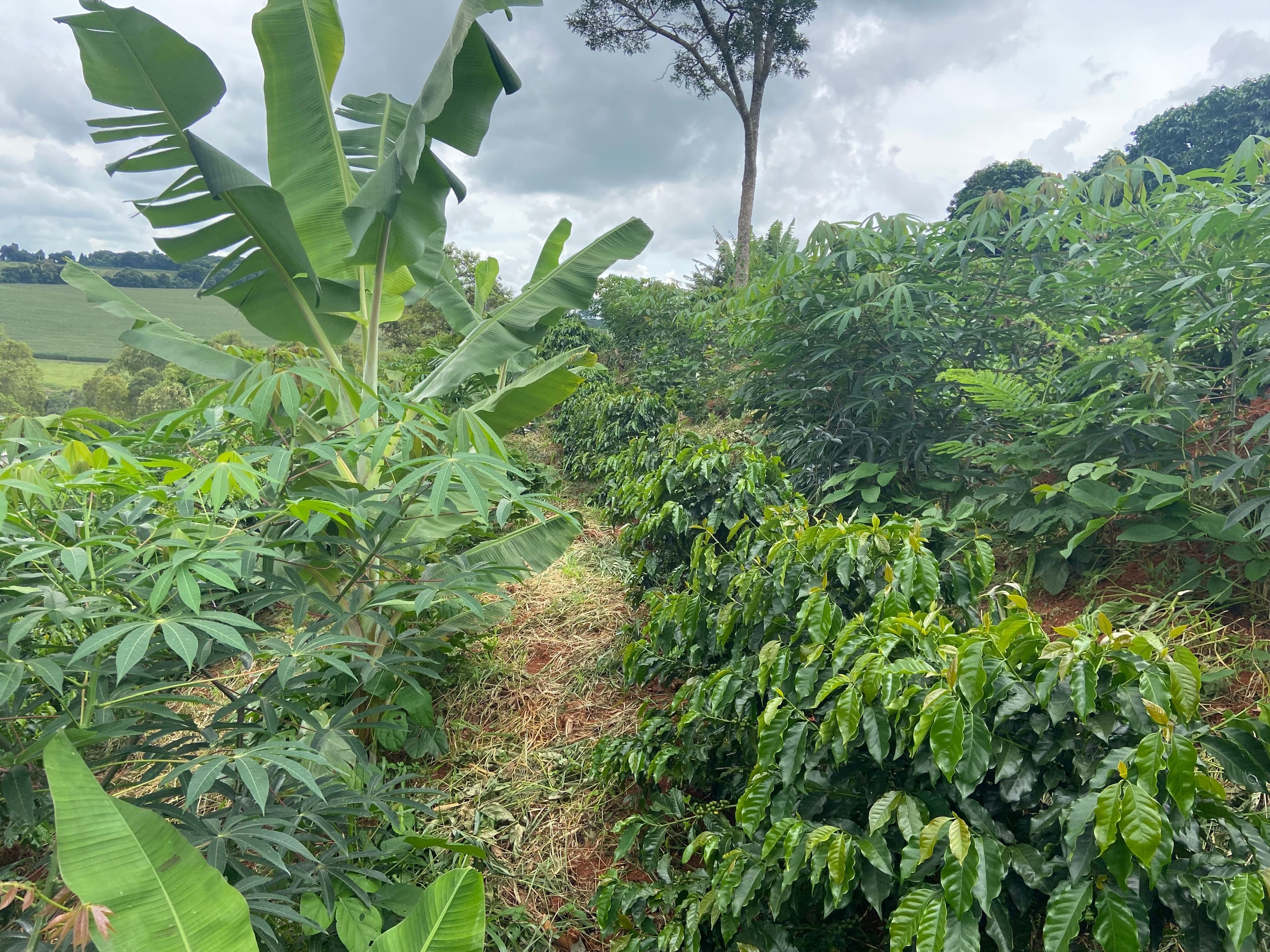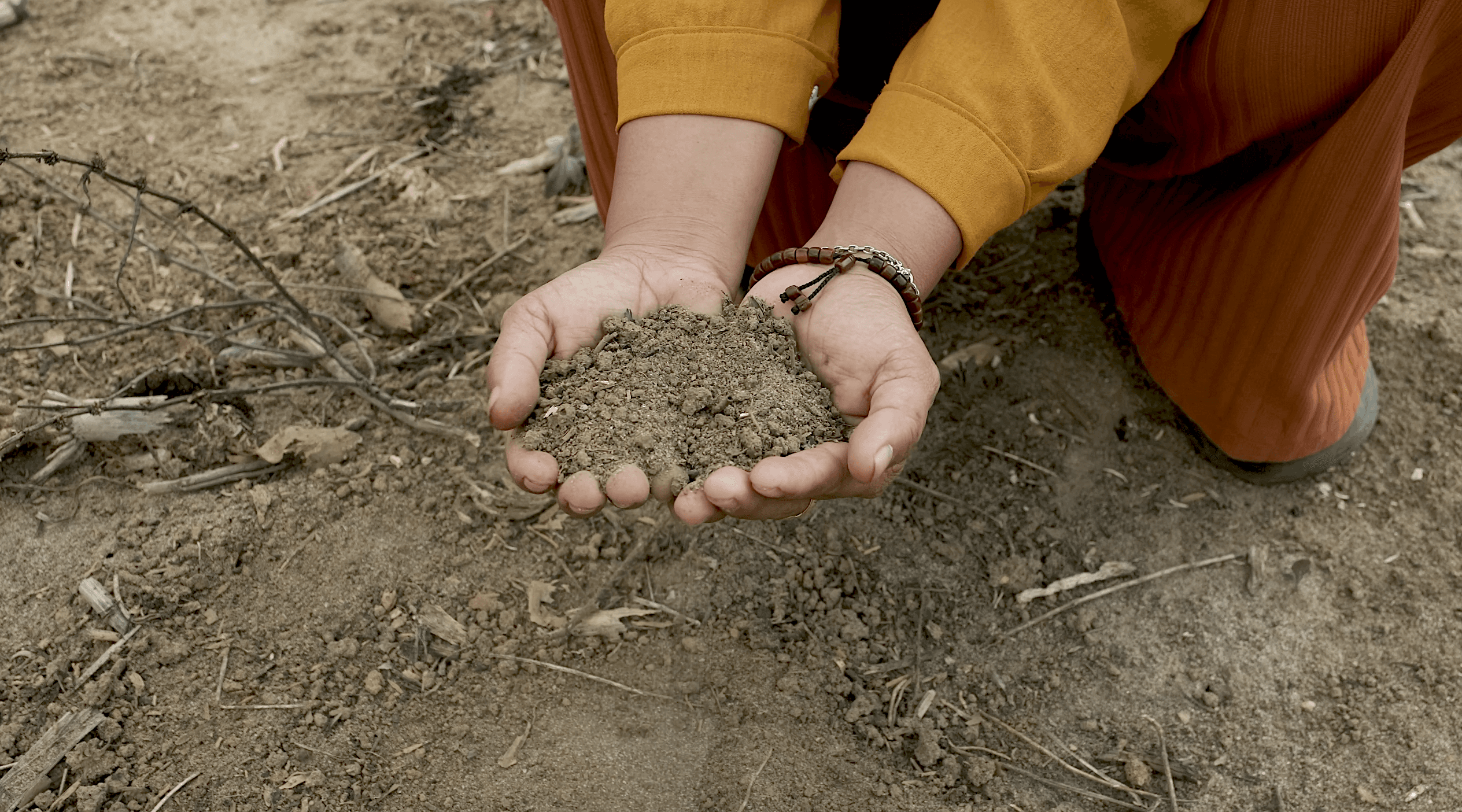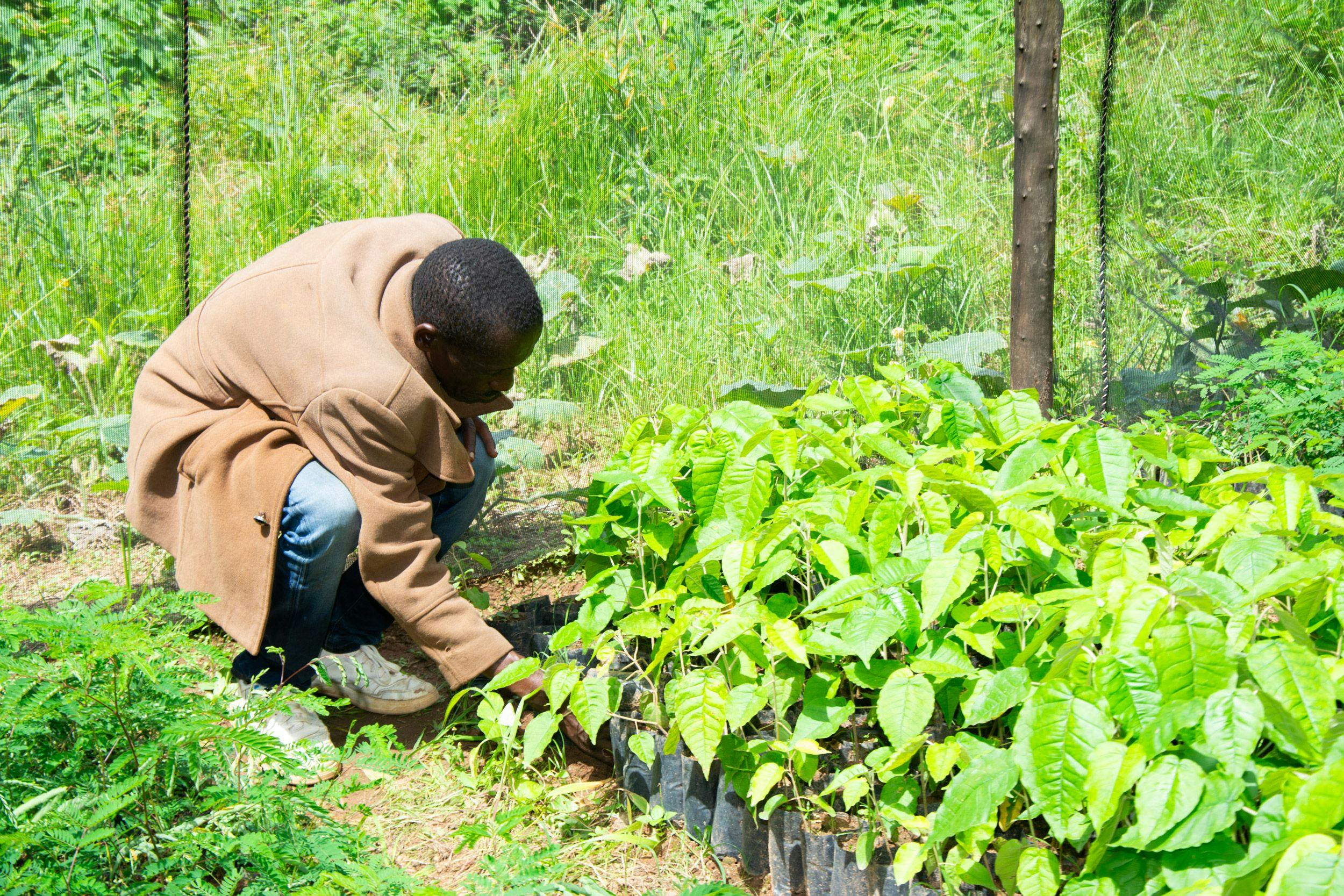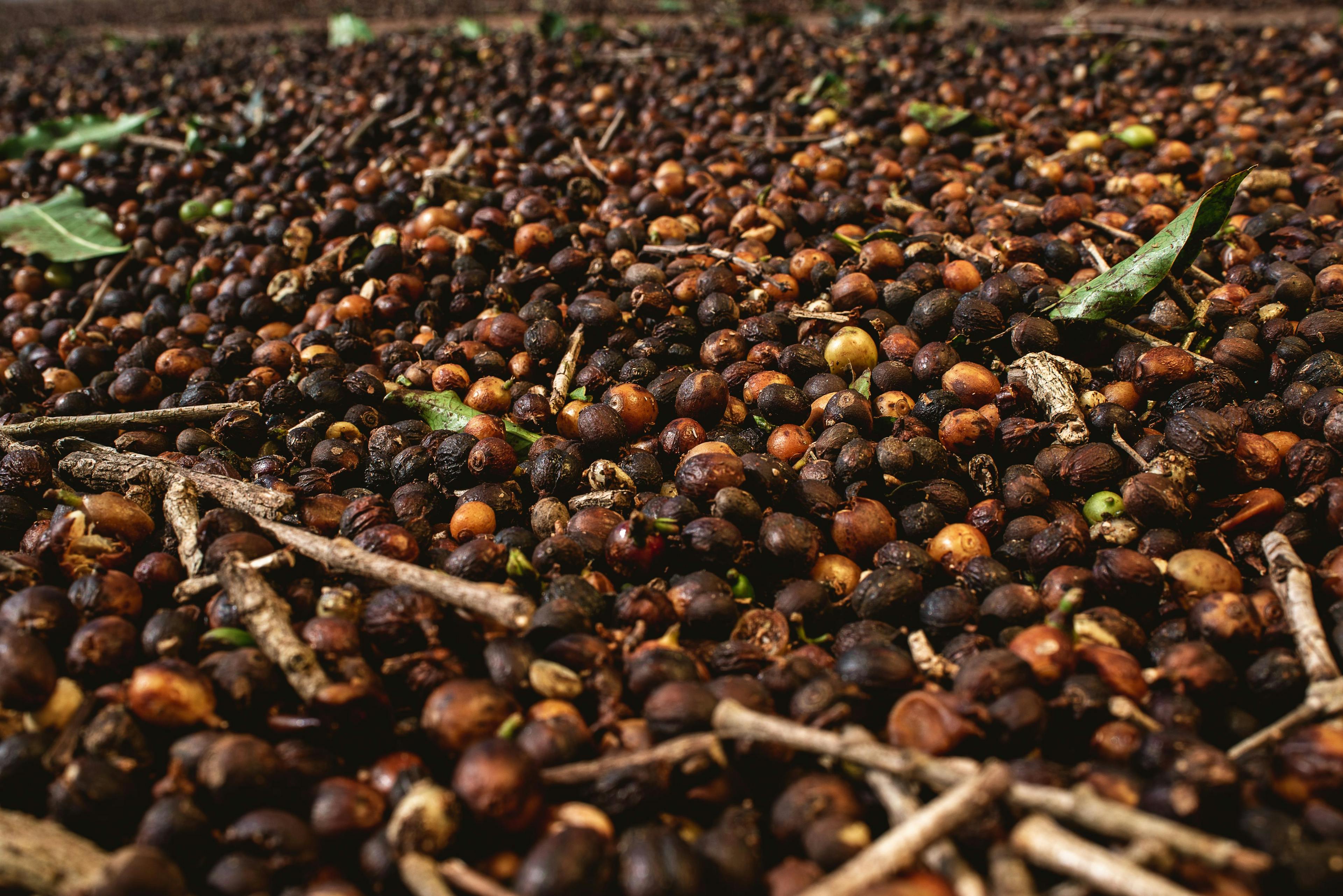Sweeting Coffee Yields with Farm-Grown Honey in Indonesia

Inviting us to stand in a leafy green corner outside his house and holding up a hand-crafted, wooden bee box, Sofik beams as he tells us of his bees. “Since I started raising bees, the coffee on my farm is doing better, while the cash I earn from selling honey helps me to pay the school fees of my children,” he elaborates.
41-year old Sofik is a typical coffee farmer from Tiga Dihaji sub-district of OKUS Regency in South Sumatra. He, his wife and their three children live in a traditional wooden house on stilts and cultivate a local variety of Robusta coffee on a few small plots around their village. Like most of their neighbours in the village, growing and selling coffee is the main source of their income. Also like many of his neighbours, in 2016, Sofik joined a coffee improvement project being implemented in his village by Hanns R. Neuman Stiftung (HRNS) with financial support from Jacobs Douwe Egberts (JDE). However, unlike his peers in the village, what makes Sofik stand out in his community is his bee keeping prowess.
Sofik’s passion for bees and honey started several years ago, when his youngest daughter suffered from a chronic illness. A cure seemed complicated, Sofik explains, but an old man in the village suggested that he use local honey to help ease his daughter’s plight. Indeed, when his daughter did eat honey, it did make her feel better. Sofik’s immediately decided to start producing his own honey and, using the internet, taught himself the basics of bee keeping. Initially just building a few bee boxes from wood he collected in the nearby forest, Sofik gradually improved and expanded his culture of local Itama bees by experimenting with various techniques: he now has over 60 bee hives placed around his farm and produces up to ten 400-ml glass bottles of the dark amber-coloured honey between June and October.
However, starting to cultivate bees has not been without challenges. “At first, other farmers in my neigbourhood scorned me. ‘You are a coffee farmer, why bother with bees?’, they would goad. I was initially discouraged, but I nevertheless continued to study and develop my bee farming methods until it finally produced good honey ”, Sofik recounts. And now Sofik has reaped the rewards of his resolve: word-of-mouth has now made his honey sought after locally, and he currently sells his honey for a princely sum of US$ 14 per bottle. Earning over US$ 100 from the honey last year provided a welcome complement to the approximately US$ 1,000 he made from his coffee. When his coffee season is not too good, he now has the honey to fall back on.
Yet beyond their honey, Sofik has discovered another significant benefit of his bees, this time directly benefitting his coffee. “When the coffee flowers bloom, the Itama bees can help the coffee pollination process” Sofik reasons. “The Itama bees have always been living in the forest and around the coffee farms of the area”, Sofik continues, “but in the past, coffee farmers in the village treated bees as pests, spraying pesticides to get rid of them.”
By bringing the bees back close to his coffee, he is boosting their capacity to pollinate coffee flowers. Indeed, this additional bee pollination, in combination with applying the good coffee practices that he learned from HRNS field officer Masnadi, has arguably helped him double his coffee harvest from around 500 kg a few years ago to the one tonne he harvested last season.
Serving us cups of hot, sweet coffee, Sofik proudly showing us a few glasses filled with his dark-orange honey. Bees and coffee are a winning combination, he happily concludes. And now, despite their initial scepticism or scorn, even some of his neighbours are seeking to emulate Sofik’s honey-sweet success with coffee and bees. The HRNS/JDE coffee improvement project has taken note: we will attempt to build on this in its partnership with other coffee farmers in a similar situation to Sofik, and hopefully Sofik can assist in training his peers on apiculture.



